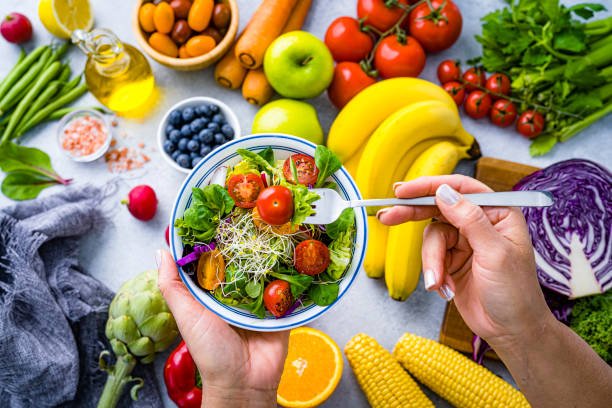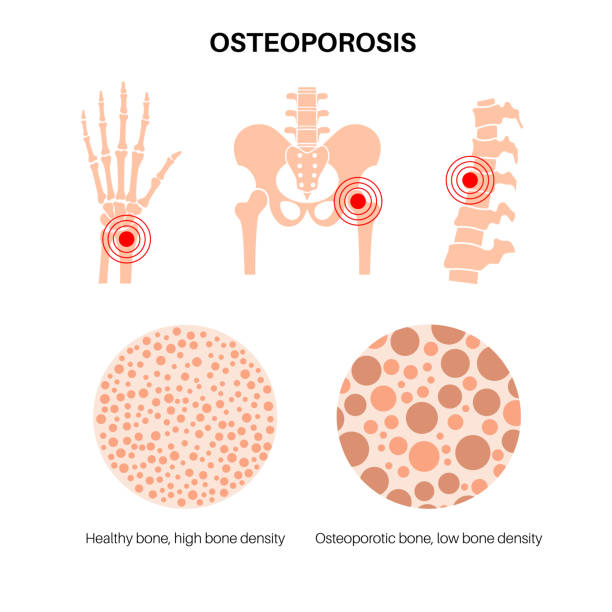In a world where fast food meals are often cheaper than a bag of fresh produce, the idea of eating healthy can seem like a luxury reserved for those with padded wallets. Supermarket aisles brim with colorful packaging, tempting deals, and misleading labels. Add to that the rising cost of living, and it’s easy to assume that nutritious food is out of reach for the average person. But here’s the good news: healthy eating isn’t just for the rich or the fitness-obsessed. With a little planning, knowledge, and creativity, you can nourish your body and soul without draining your bank account.
The myth that healthy food is expensive stems more from perception than reality. While it’s true that organic salmon fillets and exotic berries can cost a pretty penny, these aren’t the only ways to eat well. In fact, many of the world’s healthiest foods are also among the cheapest. The secret lies in understanding your options, making smarter choices, and learning a few tricks that turn simple ingredients into satisfying meals. This journey begins not in a fancy health food store, but in your own mindset.
Rethinking the Way We View Food
Many of us have been conditioned to think of food in terms of convenience. Microwavable meals, fast-food combos, and prepackaged snacks dominate our lives. They promise time-saving, satisfaction, and value. But what do we really get in return? Often, it’s excessive salt, hidden sugars, unhealthy fats, and barely any nutrients. And ironically, over time, these “cheap” foods lead to costly consequences—doctor visits, medications, and health complications.
Eating healthy on a budget means shifting from convenience-first to value-first thinking. True value isn’t just about dollars and cents—it’s about the nutritional bang for your buck. Brown rice, lentils, carrots, and oats may not be glamorous, but they’re powerhouses of nutrients that cost mere pennies per serving. This mindset shift, once embraced, opens the door to an entirely new approach to eating.
The Power of Planning
Meal planning is the unsung hero of budget-friendly healthy eating. When you take a few minutes each week to decide what you’ll cook and eat, you gain control over your grocery list, your schedule, and your wallet. Planning prevents impulse buys, reduces food waste, and ensures you’re getting a balanced diet.
The beauty of meal planning lies in its flexibility. You don’t need to plan every bite or cook elaborate dishes. A simple rotation of staple meals—say, vegetable stir-fry on Mondays, pasta with beans on Wednesdays, and homemade soup on Fridays—can anchor your week. Planning also allows you to capitalize on sales, use ingredients across multiple meals, and avoid the stress of last-minute decisions that often end with takeout.
Mastering the Grocery Store Game
Grocery shopping on a budget isn’t just about clipping coupons or hunting for sales—it’s about strategy. Before you even step into a store, your list should be your weapon. Stick to it. Wander the aisles without a plan, and you’re more likely to fall for marketing traps or hunger-driven purchases.
One golden rule: shop the perimeter of the store. That’s where you’ll find fresh produce, dairy, meats, and other whole foods. The inner aisles, while sometimes necessary, are packed with processed items designed to tempt you.
Buying in bulk can be a huge money-saver, especially for staples like beans, rice, oats, and whole grains. These ingredients store well and form the foundation of countless healthy meals. Frozen fruits and vegetables are another budget-friendly treasure. They’re picked at peak ripeness, flash-frozen, and often cheaper than fresh varieties—without sacrificing nutrition.
Don’t underestimate store brands, either. They often offer the same quality as name brands at a fraction of the price. And if you live near a discount grocer, farmer’s market, or ethnic grocery store, you can discover an entire world of affordable and nutritious options waiting to be explored.
Cooking as a Life Skill
In the age of delivery apps and premade meals, fewer people are learning to cook from scratch. But cooking is one of the most empowering skills you can develop, especially when you’re trying to eat healthy on a budget. It puts you in charge of what goes into your meals—how much salt, sugar, oil, and flavor you want.
You don’t need to be a chef. Basic skills like boiling rice, sautéing vegetables, or roasting a tray of potatoes can carry you far. Start simple. Learn one or two recipes and build from there. Over time, cooking becomes second nature and even enjoyable.
Batch cooking is a powerful technique for saving both time and money. Spend a few hours one day preparing meals for the week—chili, stews, casseroles, grain bowls—and store them in the fridge or freezer. You’ll avoid the temptation to order out and always have something nourishing ready to go.
Making the Most of What You Have
Frugality breeds creativity. When you’re working with a limited budget, every ingredient matters. Leftover vegetables can become soup or stir-fry. Overripe bananas are perfect for oatmeal or baking. Stale bread transforms into croutons or breadcrumbs. Understanding how to repurpose food not only stretches your budget but also reduces waste.
Meal components can also be reused in various ways. A pot of beans, for example, can be served with rice one night, added to a salad the next day, or blended into a dip later in the week. This kind of flexibility makes your ingredients work overtime.
Seasonings, spices, and herbs are your allies. They elevate simple dishes, adding depth and flavor without breaking the bank. Garlic, onions, cumin, paprika, chili flakes—just a few budget-friendly seasonings can transform bland into bold.
The Magic of Simple Ingredients
Sometimes, the most basic ingredients deliver the greatest health benefits. Take lentils: they’re packed with protein, fiber, iron, and folate, and cost less than a dollar per pound. Add some chopped tomatoes, onions, and spices, and you have a delicious, hearty meal. Or consider eggs—affordable, versatile, and nutrient-dense.
Whole grains like brown rice, oats, bulgur, and barley are filling, inexpensive, and packed with nutrients. They serve as the base for salads, stews, breakfast bowls, and more. Combine them with vegetables and a protein source, and you have a balanced, satisfying dish.
Root vegetables—potatoes, carrots, beets—are among the cheapest foods you can buy. They store well, can be prepared in countless ways, and provide essential vitamins and minerals.
Don’t overlook canned goods. Canned beans, tomatoes, and fish are shelf-stable, easy to use, and often very affordable. Just look for options with minimal added salt or sugar.
Smart Swaps and Savvy Substitutions
You don’t need to give up your favorite meals—you just need to get a little creative. Craving pizza? Try a homemade version with whole wheat dough, tomato sauce, and plenty of vegetables. Love burgers? Make your own using black beans or lentils. Want something sweet? Bake with ripe bananas or applesauce instead of sugar.
Many expensive health trends have cheap alternatives. Instead of almond flour, try oat flour. Swap quinoa for brown rice. Use cabbage instead of kale. Make your own hummus, granola, or salad dressings for a fraction of the store-bought price.
Learning these swaps makes healthy eating more affordable and introduces you to a world of delicious, homemade possibilities.
Eating Out Without Overspending
Let’s face it—sometimes you want (or need) to eat out. While dining at restaurants or grabbing takeout can be pricey, it doesn’t have to wreck your budget or your health. The key is mindfulness.
Choose places with customizable options—think salad bars, build-your-own bowls, or sandwich shops where you control the ingredients. Skip the extras like drinks or desserts. Share a dish or take leftovers home for a second meal.
Many restaurants offer large portions. What you eat in one sitting could easily be two meals. Make the most of it. And remember, there’s no shame in drinking water instead of ordering a soda—it’s better for your body and your budget.
Feeding a Family on a Budget
Feeding more mouths doesn’t mean spending exponentially more. With planning and smart choices, you can keep everyone well-fed without overspending. Meals like soups, stews, casseroles, and pasta dishes stretch ingredients further and often taste even better as leftovers.
Getting kids involved in meal prep not only teaches them about food but also makes them more likely to eat what’s served. Focus on versatile ingredients everyone can enjoy and build meals around shared favorites.
Planning family meals around what’s on sale or in season can make a big difference. Buying produce at its peak is cheaper and tastier. Consider frozen options for out-of-season favorites—they’re often more affordable and just as nutritious.
The Long-Term Benefits of Eating Healthy on a Budget
When you consistently eat nutritious food, your body feels the difference. Energy levels rise, immune function improves, and you’re less likely to suffer from chronic illnesses. And when you avoid the long-term health costs associated with poor eating—doctor visits, medications, missed work—you’re saving in more ways than one.
Eating healthy on a budget isn’t just a temporary challenge—it’s a lifestyle. One that rewards you with better health, financial savings, and a deeper appreciation for what you put into your body.
Breaking the Cycle of Diet Fads
It’s easy to fall into the trap of diet fads, especially when they promise dramatic results. But most of these trends rely on expensive supplements, restrictive rules, or exotic ingredients. They’re rarely sustainable, and they often ignore the simple truth: healthy eating doesn’t require magic pills or superfoods. It requires balance, consistency, and common sense.
A budget-conscious approach to nutrition helps you avoid the gimmicks. It focuses on whole foods, simple meals, and long-term well-being. When you understand that health comes from daily choices—not quick fixes—you free yourself from the exhausting cycle of dieting.
Cultivating a Positive Relationship with Food
Eating well on a budget is about more than saving money—it’s about respect. Respect for your body, your time, your culture, and your future. It’s about breaking free from the narrative that health is only for the wealthy or that good food must come in shiny packaging.
When you learn to cook, plan, shop, and eat with intention, you begin to see food not just as fuel, but as joy, comfort, and connection. And you don’t need a gourmet kitchen or a millionaire’s pantry to experience that.
Final Thoughts: A Healthier Future Starts Now
The road to eating healthy on a budget isn’t paved with perfection. There will be slip-ups, temptations, and days when a bag of chips wins over a bowl of salad. That’s okay. What matters is the direction you’re heading and the habits you’re building.
Every meal is a chance to nourish yourself. Every trip to the store is an opportunity to make choices that align with your goals. Every home-cooked dish is a victory in the journey toward a healthier, more affordable lifestyle.
You don’t need to be wealthy to eat well. You just need to be informed, empowered, and willing to start. The tools are in your hands. The future is on your plate.






